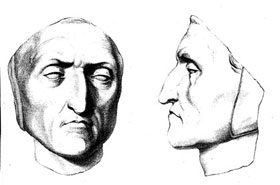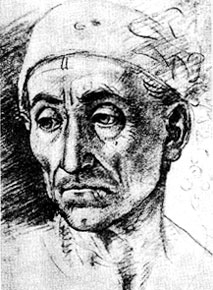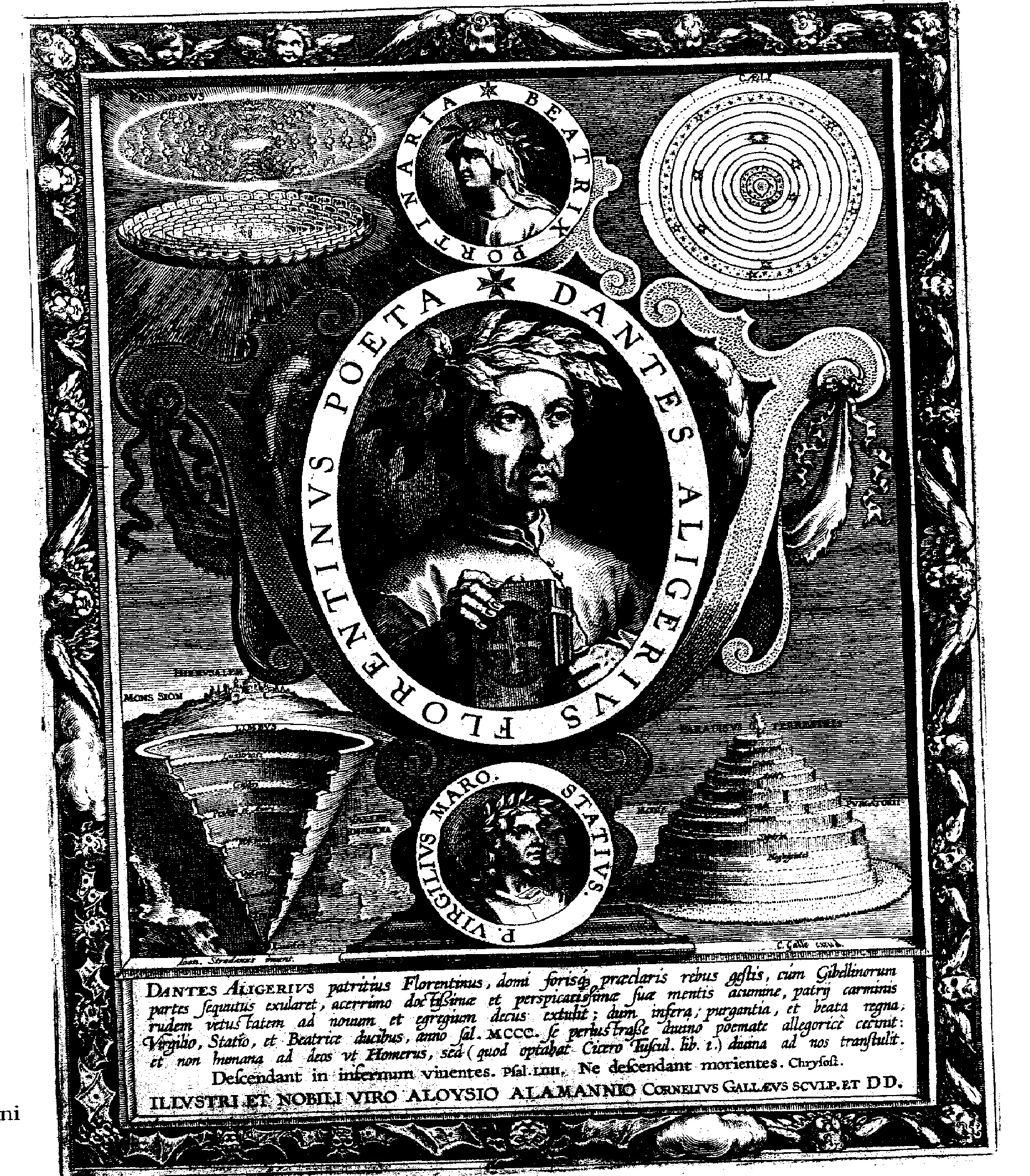Concerning the Date of Dante
Concerning the Date of Dante
Berlin · 2020 Uwe Topper
When did Dante live?
Concerning the true dates of Dante this is our fourth article, we have already three articles in the library:
The basic article is from 2007: go >Dante – a new dating< (for the moment only a German and a French version available).
Second there is go Hardouin’s doubts about Dante’s age
This article is based on Jean Hardouin, a wellknown Jesuit, who professed that he is convinced : Dante lived at least 90 years nearer to us than proposed by traditional dates. In some sentences he even gets near to 1500 (which is my own position). Hardouin accumulates sound proves for his thesis in his French essay : Doubts on the dates of Dante’s age. It was edited by C. L. in London in 1847. The original French version is annotated in English by the editor. The citations from the Divine Comedy are in Dante’s Italian (Toscane). There are also phrases in Latin. To make reading more easy for the German reader, I have rendered the whole text in German.
In the end I add some of my own oberservations:
Comment by Uwe Topper
As the writer of the annotations admits at the end, it is his job to clear Dante from accusations and portray him as a good Catholic, which is why his essay was also translated into Italian, the language of Rome, by which it became certainly more apprehensible than an English essay in a largely anti-Roman milieu.
After all, to this anti-heretic writing we owe the preservation and dissemination of Hardouin’s text.
Some of Hardouin’s individual arguments may be rebuttable, and may actually be based in part on misunderstandings (such as regarding the two royal bloodlines), but the tenor is clear to Hardouin: the timing of the Divine Comedy does not match 1300 AD, it is more likely to be placed around 1500. The poet “betrays” himself here and there, Hardouin says, by reporting events that would lie in the future. Anachronisms are the tool of the investigation.
Harduoin quotes Raphael Volaterranus (late 15th century); the latter says that of Dante there existed a collection of songs (“Ultima regna canam …”), and otherwise only a small booklet. So he didn’t know the Divine Comedy, Hardouin concludes; and since we don’t know the quoted song collection today, he assumes it is lost. The English commentator does not notice this point at all.
In official Dante research it is assumed that this collection of songs refers to the Divine Comedy, although there is obviously no verse in it that begins with Ultima regna canam; however, the narrator is not Volaterranus but Bocaccio. It is also pointed out that the verse – Ultima regna canam, fluvido contermina mundo, / spiritibus quae lata patent, quae praemia solvunt / pro meritis cuicunque suis – does not sound like Dante at all.
If, according to the commentator, one of Hardouin’s arguments “contradicts the traditional fact” (note 12), then this is exactly what Hardouin wants to tell us: the tradition is incorrect. Here the sources should be researched, which the commentator rarely did. Recourse to the commonly known version of history is not an argument if that is what you want to refute.
I would like to add the following clues – not mentioned by Hardouin but certainly known to him: The list of Roman popes in the 27th song of Purgatory, where (verses 40-45) Linus, (Ana-) Kletus, Sixtus, Pius, Calixtus and Urban as popes and martyrs are named, is not exhaustive and not all of the popes mentioned were martyrs (which the text would require), but they are in the correct order; and such a list of popes was only drawn up by Pope Eugene IV in mid-15th century. Dante, who is dated much earlier, should not have known the list.
Or ponder about this: there is clear reference to the birth of Jesus in a stable (“nativity scene”) in the cited 20th song of Purgatory, where Rome is referred to as a she-wolf and the Holy See as a sewer; the Wiclif-type (protestant) world is clearly Luther’s time, as the writer of the notes agrees, even though he mentions forerunners who allegedly were burned way back in the 12th century (Arnold von Brescia). The birth of Jesus in a stable is unsuitable in terms of chronology because it does not appear in Italy before late in the 15th century.
A striking argument (in my view) is also Dante’s exact indication of the length of the tropical year, which is expressed in the 27th song of Paradise, verse 142f:
“Because the hundredth part is not taken into account
down there, January is drifting out of winter ”.
I am surprised that the poet here uses for error of the Julian year the fraction one hundredth instead of a three-hundredth (of a day) as recorded around 1300 (see Sacrobosco who has 1/288), while a hundredth of a day is a round number of modern measurements (1/128), which was only spread in Europe after 1450.
3. Article : go Dante’s life dates – Correcting the chronological situation of Italian poet Dante
And now here number 4: When did Dante live?

In the first article I bring an illustration of the death mask of Dante:Dantemaske
The authenticity of the death mask is questioned. Reason for this is the fact that it rather dates from around 1500 AD, so it is by no means as old as it should be. Dante died in “1321”.
The serenal facial features of Dante’s death mask fit those of the vigorous drawing that Luca Signorelli (1450 – 1523) probably created from the living Dante.

Dante by Luca Signorelli dantekreide
And now follows another hint: In Albrecht Duerer’s woodcut cycle for the Revelation of St. John, the visionary St. John occurs again and again, always starring nearly the same face; yet in the last picture (on sheet XVI) – what a surprise – does he have the features of Dante. The illustration shows a detail from the last sheet (XVI)
https://s2.uupload.ir/files/dürer_dante_1_tgjl.jpg
DürerDante1
When Duerer gave the visionary these features, he wanted to allude to the heavenly vision in Dante’s “Divine Comedy ” and honor a contemporary genius, just as Duerer was highly valued by contemporary artists in Italy.
For comparison, see the other heads of the seer in the same Duerer cycle. First St. John, as he appears next to the Virgin Mary as the writer of his revelation (later this was the title page). It is taken from the frontispice of the 1511 edition and shows, atypically, the young seer John, who clearly looks different from the old man on the last sheet, whom I see as a portrait of Dante.
https://s2.uupload.ir/files/dürer_joh1_f5dq.jpg
Dürer Joh1
On sheet III, St. John appears in an adoring posture, almost from behind; the head in profile turning right is in the style of the other heads of St. John.
https://s2.uupload.ir/files/dürer_joh2_ml.jpg
Dürer Joh2
and in the center of the following sheet (IIII) also in profile turned to the left side:
https://s2.uupload.ir/files/dürer_joh_6mk5.jpg
Dürer Joh
Here on sheet X he is the prophet who has to swallow the booklet and come back to life in a later age:
https://s2.uupload.ir/files/dürer_joh4_f1td.jpg
Dürer Joh4
The other depictions of the seer in Duerer’s woodcuts are also comparable to each other and different to that of sheet XVI.
Appreciate sheet XIIII, almost like St. John on sheet IIII:
https://s2.uupload.ir/files/dürer_joh3_r8sl.jpg
Dürer Joh3
In this sense, I assume that in the last picture (sheet XVI) Duerer wanted to clearly allude to the poet of the Divine Comedy by giving his John the features of Dante here.
This also probably means that there were enough Dante portraits in circulation to accurately reproduce it and to trigger this association among those who regarded the woodcuts.
Which seems to me another strong indication that Dante’s lifetime was not long ago when Duerer created this woodcut cycle. Maybe he was still alive.

DanteCornelis
Here is a title page with Dante (and small below: Virgil) by Cornelis Galle the Elder around 1595, i.e. much later than the “normal” Dante portraits and correspondingly more strange, as would be expected if the person depicted has not lived for almost a century; however still characteristic.
Ps.: By the way, the editor of Duerer’s woodcuts to the Apocalypse (Sepp 1902) has drawn a strong and emotional comparison between Dante’s heavenly vision of the Divina Comedia and Duerer’s sheet XVI . He doesn’t mention the portrait, though.
References
Sepp, Prof. Dr. I. N. (1902): Die geheime Offenbarung Johannis. 15 Vollbilder nach den Handzeichnungen Albrecht Dürer’s und gleichzeitigem Text nach der Straßburger Ausgabe von Martin Graeff 1502. (Carl Haushalter, München)
Topper, Uwe (1993): Das letzte Buch. Die Bedetung der Offenbarung des Johannes in unserer Zeit (Hugendubel München)
In the meantime there is another article resuming our subject: go Dante’s life dates.







